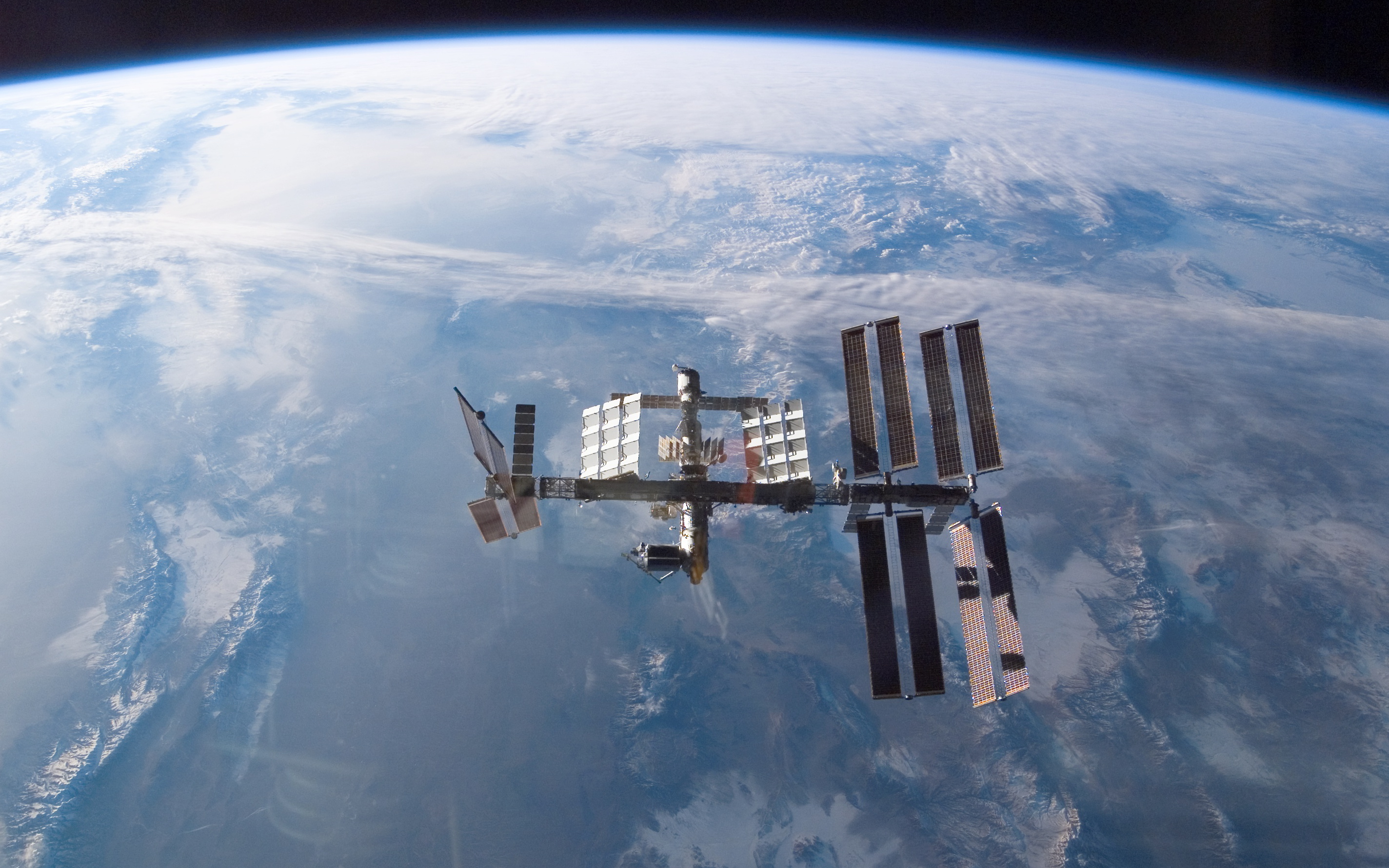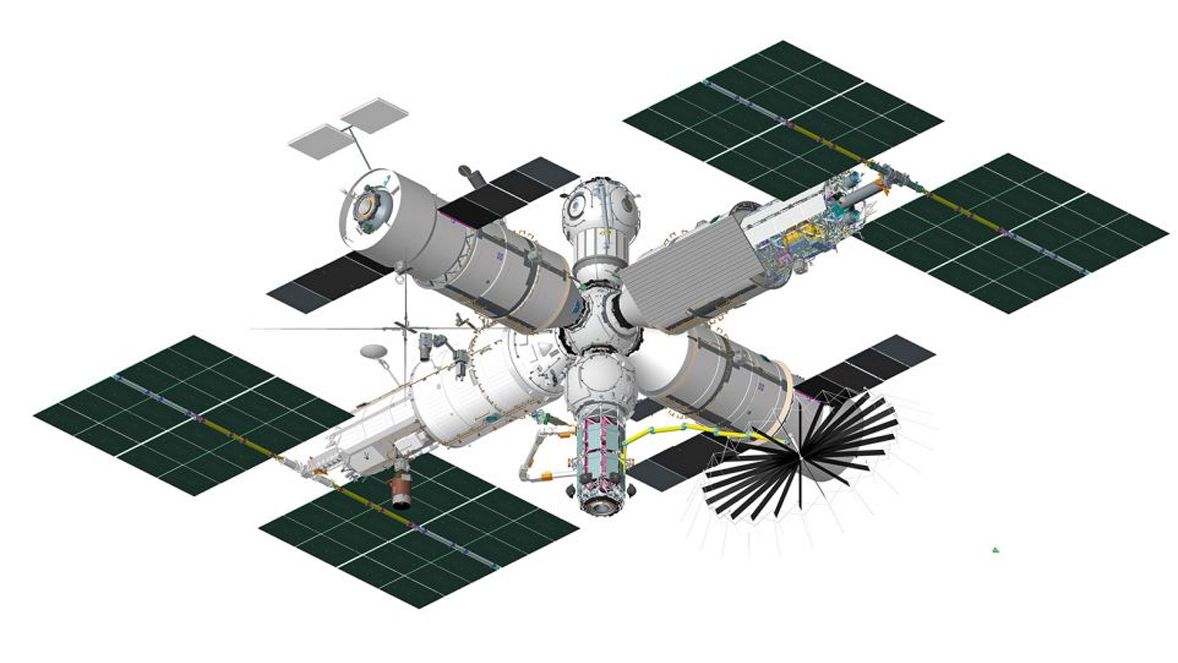SpaceX addressing Falcon 9 rocket damage ahead of next NASA astronaut launch
Crew-5 astronauts are confident in SpaceX's ability to fly human passengers safely.
A Falcon 9 rocket colliding with a bridge was responsible for the damage that delayed SpaceX's next human launch.
The Falcon 9 first stage was damaged during transport, a SpaceX representative told reporters during a briefing today (Aug. 4). The briefing topic was SpaceX's delayed Crew-5 mission, which is now slated to fly four individuals to the International Space Station in late September in a Crew Dragon spacecraft.
NASA disclosed Crew-5's booster damage in mid-July, but the bridge collision appears not to have been confirmed officially outside of media reports, like this one from NASASpaceflight, until today.
In pictures: Amazing launch photos of SpaceX's Crew-4 mission
"The booster stage came in contact with a bridge on the route," Benjamin Reed, SpaceX's senior director of the human spaceflight program, said in the livestreamed NASA briefing.
As is typical of Falcon 9 boosters, the rocket stage was on a tractor-trailer moving between a SpaceX manufacturing facility in Hawthorne, California, and a testing facility in McGregor, Texas, when the incident happened, he said.
"We assessed that damage. It was a fairly minor incursion, but it still caused some damage," Reed continued. "We decided to replace the composite interstage and some of the other components on that first stage."
Get the Space.com Newsletter
Breaking space news, the latest updates on rocket launches, skywatching events and more!
Reed added that SpaceX went through a "very robust process of analysis and tests" on that Falcon 9, and it was sometime during this period when the Crew-5 astronauts were informed of the issue.
Crew-5 includes NASA astronauts Nicole Mann and Josh Cassada, Japanese astronaut Koichi Wakata and Russian cosmonaut Anna Kikina.
"We had some very transparent conversations with them," Mann told reporters in a separate livestreamed NASA briefing today that featured the four crewmembers. Leadership at SpaceX spoke frequently to the crew about "modifications and challenges" associated with the collision, she said.
"Everybody is certainly on the same page that the hardware needs to be reliable and it needs to be safe," Mann continued. "We have full confidence that NASA and SpaceX and the international partners are not going to put us on a rocket or a spacecraft that they feel is not ready to go."
Reed echoed that safety focus in his own comments, saying SpaceX undertook a process "to assure that that stage would be ready to go, and absolutely safe to fly the crew as we do for every mission."
He added, "We want to make sure it's the safest. We've all certified it to be [that way], and that we're confident in flying the crewmembers."

NASA is framing Crew-5 as an unprecedented opportunity in international space collaboration, citing as evidence the presence of Kikina on an American commercial spacecraft — a first for any Russian federal space agency cosmonaut. (Kikina's spot was booked through a seat-swap negotiation that will continue putting NASA astronauts on Russian Soyuz spacecraft, which they've flown on for years.)
Crew-5 preparations, however, are taking place amid more turbulence in the relationship between the two principal partners of the ISS: NASA and Roscosmos, the Russian space agency.
Following months of threats by Roscosmos officials, new head Yuri Borisov said in July that his agency would be leaving the ISS partnership "after 2024," which is the year that the current agreement expires.
Borisov later clarified the statement, saying Roscosmos will "start the exit process" in 2024 or so as it gears up to build and operate a Russian space station late in the decade. NASA and the international partners emphasized in the briefings today that discussions are ongoing to negotiate the separation in the coming years.

The ISS coalition met on Friday (July 29) in their usual multilateral coordination board (MCB) meeting to discuss plans, NASA human spaceflight chief Kathy Lueders told reporters.
"Our end gives us direction to continue the space station to 2030," Lueders said, referring to legislation awaiting U.S. President Joe Biden's signature to extend NASA's participation to that date. (Media reports indicate Biden will sign the legislation next week.)
The partners wishing to continue the relationship past 2024, Lueders added, "are also working to their plans and incrementally looking at support."
As for what's next with Russia, "We've got to wait and see what the government desires each of us to do," she said. "To be fair, they're still in their process of getting approval. The goal would be to talk about their progress at our next MCB, which will be planned in the next six or seven months."
Echoing past Roscosmos comments about the Russian ISS components, which are rated for 15 years of service and in some cases are approaching 25 years in orbit, the agency's executive director of human spaceflight programs said it's time to get ready for a replacement station. But that will not be an immediate process.
"We are looking into projects for the new station, but for now, we are working on extending the operation, and we don't know for how long it is yet," Sergei Krikalev said in the briefing in Russian; his comments were interpreted on-site into English.
"When there is a technical reason to terminate ... we will of course, coordinate with our partners for our interface procedures, to make this as seamless as possible for all program participants," he added.
The Japan Aerospace Exploration Agency, which supplies the Kibo science module and robotic tech to the ISS, "continues to work closely with international partners to ensure the stability of this operation," said Hiroshi Sasaki, vice president and director general of the agency's human spaceflight technology directorate, in the same briefing.
"We don't have any issues about the extension, so we want to continue supporting the program," Sasaki continued, but added that technical assessments are ongoing.
Follow Elizabeth Howell on Twitter @howellspace. Follow us on Twitter @Spacedotcom and on Facebook.
Join our Space Forums to keep talking space on the latest missions, night sky and more! And if you have a news tip, correction or comment, let us know at: community@space.com.

Elizabeth Howell (she/her), Ph.D., was a staff writer in the spaceflight channel between 2022 and 2024 specializing in Canadian space news. She was contributing writer for Space.com for 10 years from 2012 to 2024. Elizabeth's reporting includes multiple exclusives with the White House, leading world coverage about a lost-and-found space tomato on the International Space Station, witnessing five human spaceflight launches on two continents, flying parabolic, working inside a spacesuit, and participating in a simulated Mars mission. Her latest book, "Why Am I Taller?" (ECW Press, 2022) is co-written with astronaut Dave Williams.









